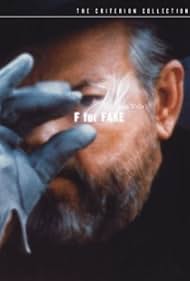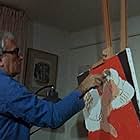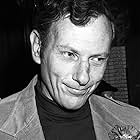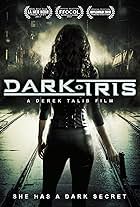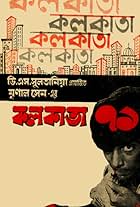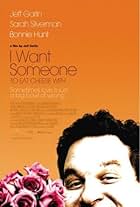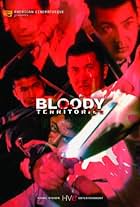A documentary about legendary art forger Elmyr de Hory. His forgeries fooled the world for years and perhaps they continue to.A documentary about legendary art forger Elmyr de Hory. His forgeries fooled the world for years and perhaps they continue to.A documentary about legendary art forger Elmyr de Hory. His forgeries fooled the world for years and perhaps they continue to.
Photos
- Director
- Writers
- All cast & crew
- Production, box office & more at IMDbPro
Storyline
Did you know
- TriviaThis documentary is featured on the 2-Disc DVD for F for Fake (1973), released in 2005.
- ConnectionsFeatures F for Fake (1973)
Featured review
"Almost True: The Noble Art of Forgery" (1997) is a 52-minute documentary produced for the Norwegian Film Institute which takes a look back at Elmyr de Hory, a painter who became famous for his ability to forge paintings and drawings by many of the great masters of the late 19th and early 20th centuries (Picasso, Van Gogh, Matisse, Modigliani, Degas, etc.). He was the subject of the book, "Fake!," by Clifford Irving (who became infamous for writing a fake autobiography of Howard Hughes) and both he and Irving were subjects of Orson Welles' documentary, "F for Fake." I never would have seen or even heard of "Almost True" if it hadn't been included as an extra on the Criterion Collection 2-disc DVD edition of "F for Fake."
"Almost True" follows up with interviews with several people who were featured or seen in the earlier film, including Mr. Irving; Guilemette Joris, a close female friend of de Hory's in Ibiza, Spain; and Mark Forgy, de Hory's friend, roommate and sometime bodyguard, as well as people not seen in the earlier film including Anthony Hugo, an Englishman (and Bob Hoskins lookalike) who acted as a middleman between de Hory's partners and various art galleries in England; Sandy Pratt, an Englishman who ran a bar in Ibiza and played host to de Hory and his circle; and actress Ursula Andress, who was a friend of de Hory's. Much of the older footage used here was also used in "F for Fake" and originated with director Francois Reichenbach, whose abortive documentary on de Hory was, in essence, finished by Welles in his own inimitable fashion. The filmmakers begin their effort here by trying to determine if de Hory's claims of having sold fakes to various world-class museums is true. As it turns out, most museums won't even discuss de Hory with the filmmakers. Only one, in fact, does confirm such a purchase and, after that sequence, the filmmakers drop the subject and move on to an investigation of de Hory's account of his own past, traveling to Budapest to determine if de Hory had any trace of the aristocratic background he claimed. They don't find a lot, but the trip does yield enough interesting details to make it worthwhile.
Afterwards, the film follows de Hory's documented world travels, from Budapest to Paris, Paris to Rio, Rio to New York and then a long trip across the U.S. before he eventually settles on the island of Ibiza, Spain, where much of the film was shot and where most of the interviewees still live. Eventually, the filmmakers focus on a color catalog of de Hory's fakes that was published in conjunction with an exhibition in Tokyo in 1994 and ask de Hory's friends to look it over and comment. A few of them are skeptical that de Hory was responsible for all of them, but the film pretty much ends abruptly after these observations. I would have liked some more investigation of this.
Mr. de Hory died in 1976, after "F for Fake" was released, apparently with a self-administered overdose of sleeping pills prior to his impending extradition to France to face charges of forgery. In this film, Clifford Irving suggests that his death might have been faked. Mark Forgy laughs at this notion and describes how de Hory died in his arms. Forgy, a tall blond American with a lilting voice and a gentle way of speaking (and could easily have been a movie actor had he wanted), appears to have genuinely cared for and about de Hory and emerges as the most engaging and sympathetic figure in the film.
Curiously, neither the narration nor the interviews ever once mention "F for Fake" or Orson Welles. The end credits only acknowledge the film clips used as "Footage from BBC/Elmyr: The True Picture/Director Francois Reichenbach." I have no idea why this is the case. Certainly few viewers would come to this film without first having seen "F for Fake." I find the subjects of both of these films to be quite fascinating and I did indeed read Clifford Irving's book on de Hory many years ago. This film, however, raises more questions than it answers and leaves us hungry for more. Alas, it's quite possible that all the answers died with de Hory. Or disappeared with him, if Irving's theory has any weight.
"Almost True" follows up with interviews with several people who were featured or seen in the earlier film, including Mr. Irving; Guilemette Joris, a close female friend of de Hory's in Ibiza, Spain; and Mark Forgy, de Hory's friend, roommate and sometime bodyguard, as well as people not seen in the earlier film including Anthony Hugo, an Englishman (and Bob Hoskins lookalike) who acted as a middleman between de Hory's partners and various art galleries in England; Sandy Pratt, an Englishman who ran a bar in Ibiza and played host to de Hory and his circle; and actress Ursula Andress, who was a friend of de Hory's. Much of the older footage used here was also used in "F for Fake" and originated with director Francois Reichenbach, whose abortive documentary on de Hory was, in essence, finished by Welles in his own inimitable fashion. The filmmakers begin their effort here by trying to determine if de Hory's claims of having sold fakes to various world-class museums is true. As it turns out, most museums won't even discuss de Hory with the filmmakers. Only one, in fact, does confirm such a purchase and, after that sequence, the filmmakers drop the subject and move on to an investigation of de Hory's account of his own past, traveling to Budapest to determine if de Hory had any trace of the aristocratic background he claimed. They don't find a lot, but the trip does yield enough interesting details to make it worthwhile.
Afterwards, the film follows de Hory's documented world travels, from Budapest to Paris, Paris to Rio, Rio to New York and then a long trip across the U.S. before he eventually settles on the island of Ibiza, Spain, where much of the film was shot and where most of the interviewees still live. Eventually, the filmmakers focus on a color catalog of de Hory's fakes that was published in conjunction with an exhibition in Tokyo in 1994 and ask de Hory's friends to look it over and comment. A few of them are skeptical that de Hory was responsible for all of them, but the film pretty much ends abruptly after these observations. I would have liked some more investigation of this.
Mr. de Hory died in 1976, after "F for Fake" was released, apparently with a self-administered overdose of sleeping pills prior to his impending extradition to France to face charges of forgery. In this film, Clifford Irving suggests that his death might have been faked. Mark Forgy laughs at this notion and describes how de Hory died in his arms. Forgy, a tall blond American with a lilting voice and a gentle way of speaking (and could easily have been a movie actor had he wanted), appears to have genuinely cared for and about de Hory and emerges as the most engaging and sympathetic figure in the film.
Curiously, neither the narration nor the interviews ever once mention "F for Fake" or Orson Welles. The end credits only acknowledge the film clips used as "Footage from BBC/Elmyr: The True Picture/Director Francois Reichenbach." I have no idea why this is the case. Certainly few viewers would come to this film without first having seen "F for Fake." I find the subjects of both of these films to be quite fascinating and I did indeed read Clifford Irving's book on de Hory many years ago. This film, however, raises more questions than it answers and leaves us hungry for more. Alas, it's quite possible that all the answers died with de Hory. Or disappeared with him, if Irving's theory has any weight.
- BrianDanaCamp
- Sep 16, 2013
- Permalink
Details
- Runtime52 minutes
- Color
- Aspect ratio
- 1.33 : 1
Contribute to this page
Suggest an edit or add missing content

Top Gap
By what name was Almost True: The Noble Art of Forgery (1997) officially released in India in English?
Answer